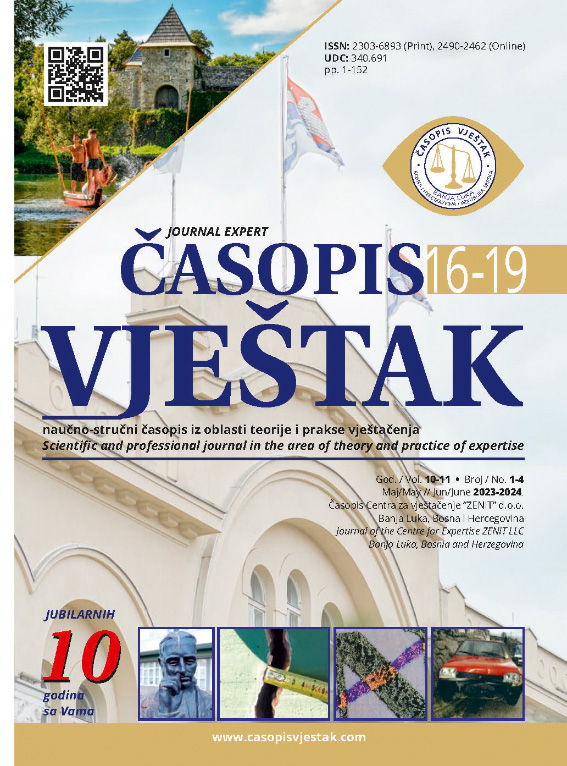Technological authenticity of contested graphic elements in documents and their relative age
DOI:
https://doi.org/10.7251/VJE2401105BKeywords:
documents, graphic elements in documents, relative age of graphic elements, raster structure, expertise, graphic engineerAbstract
Documents are everything that is printed on paper, cardboard, synthetic material and other substrates (by hand writing, writing using mechanical and electric typewriters, dot matrix printers, laser black and white printers, color inkjet and color laser printers, letterpress printing techniques, offset printing, gravure printing, pad printing, gold printing, screen printing, etc.). These can be: various contracts, wills, passports, diplomas, bills of exchange, excise stamps, invoices, drink labels, medicine boxes, protocol books, photos, videos, birth certificates, newspapers, printed banknotes, etc. etc.
Graphic elements are an integral part of every document, and they can be dependent on the type of document and its purpose, e.g. handwritten signatures, impressions of seals, stamps and stamps, types of letters (by type, cut and gradation), various types of lines, various tones, holograms, cinegrams, watermarks, various illustrations, magnetic tapes, various perforations, serial numbers, document format size, type of document binding, type of document material, etc. Graphic elements are incorporated into documents manually (signatures) and by other technological graphic procedures, depending on the type of graphic element in the document.
All documents are exclusively graphic products and their technological authenticity and sometimes the relative age of graphic elements can only be determined/experts by the most expert graduate engineers in graphic technology and not by any “self-educated graphologists” of various educational profiles. Document examiners are mistakenly still called “graphologists” instead of being properly called document forensics, because graphology has no scientific, professional and practical connection with graphoscopy. Graphology is a non-scientific field that only assumes personality traits based on his handwriting and assumes the state of his soul (this is the case with handwriting in text, handwriting in signatures and handwriting of numbers), and what about the other numerous graphic elements found in various documents. The legal and professional field in the area of document expertise should be arranged as soon as possible, because it is unorganized.
